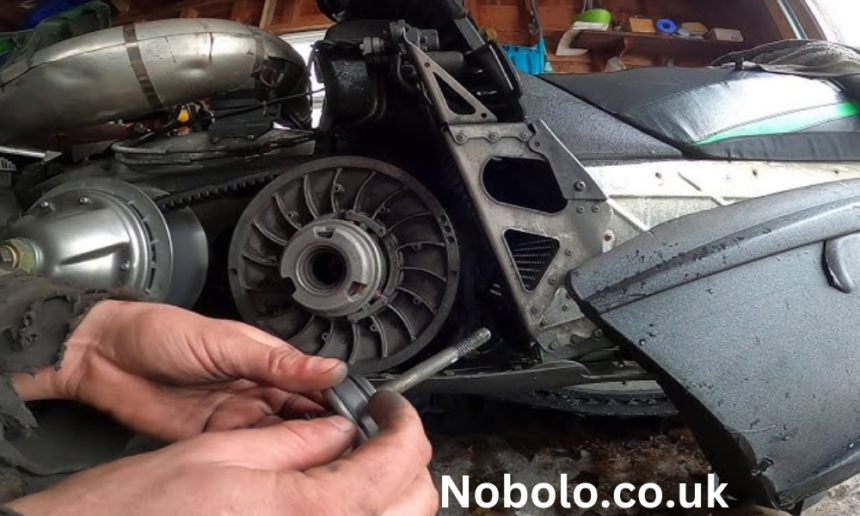Snowmobiles like the 2012 Arctic Cat F800 are high-performance machines designed to deliver power and agility in the most challenging terrains. One essential maintenance task that ensures optimal performance is belt removal and replacement. The drive belt is a critical component of the machine’s drivetrain, and understanding how to remove and inspect it can save you time, money, and potential headaches during your rides.
This article will provide a step-by-step guide to the 2012 Arctic Cat F800 belt removal process. We’ll also cover tips, tools, and troubleshooting for common issues related to the belt system. Let’s dive in!
Why Is the Drive Belt Important?
The drive belt plays a vital role in the performance of the Arctic Cat F800 snowmobile. It transfers power from the engine (via the primary clutch) to the secondary clutch and, ultimately, to the track. A worn or damaged belt can result in reduced performance, slipping, overheating, or even total drivetrain failure.
Here are some reasons why you should prioritize belt maintenance:
- Performance: A properly functioning belt ensures efficient power delivery and smooth acceleration.
- Longevity: Regular belt checks and timely replacement prevent further damage to clutches or other drivetrain components.
- Safety: A broken belt while riding can lead to loss of power and control, posing a serious safety risk.
Signs Your Belt Needs Replacement
Before jumping into the 2012 Arctic Cat F800 belt removal, it’s essential to identify when the belt might need replacement. Here are the common signs:
- Visible Cracks or Fraying: Inspect the belt for physical damage, such as cracks, tears, or frayed edges.
- Glazing or Shiny Appearance: Overheated belts develop a shiny, glazed surface, reducing grip.
- Excessive Belt Wear: If the belt width is below the manufacturer’s specifications, it’s time for a replacement.
- Unusual Noises: Squealing or slipping sounds often indicate a worn or misaligned belt.
- Loss of Power: Difficulty in accelerating or reduced top-end speed could be caused by a failing belt.
Tools Needed for Belt Removal
Before starting the 2012 Arctic Cat F800 belt removal, gather the necessary tools and equipment. Having everything on hand makes the process quicker and more efficient. Here’s what you’ll need:
- Clutch Tool: This tool is used to open the sheaves on the secondary clutch.
- Socket Wrench or Screwdriver: For removing the clutch guard.
- Gloves: To protect your hands while handling the belt and clutch.
- Replacement Belt (if applicable): Ensure it matches the specifications for the Arctic Cat F800.
- Clean Cloth: To clean the area around the clutch.
Step-by-Step Guide to the 2012 Arctic Cat F800 Belt Removal

Now that you have the tools and understand the importance of belt maintenance, let’s proceed with the step-by-step guide.
1. Prepare Your Snowmobile
Before removing the belt, ensure that your Arctic Cat F800 is ready for maintenance:
- Turn Off the Engine: Ensure the snowmobile is completely off and cool to the touch.
- Park on a Flat Surface: Place the snowmobile on a level area or use a lift stand to stabilize it.
- Engage the Parking Brake: This prevents the snowmobile from moving during the process.
2. Remove the Clutch Guard
The clutch guard protects the clutches and drive belt from debris. To access the belt:
- Locate the clutch guard on the side of the snowmobile.
- Remove the screws or clips securing the guard using a socket wrench or screwdriver.
- Carefully lift off the clutch guard and set it aside in a safe place.
3. Loosen the Secondary Clutch
The secondary clutch (also called the driven clutch) must be loosened to remove the belt. Here’s how:
- Locate the secondary clutch at the rear of the drivetrain.
- Insert the clutch tool into the designated threaded hole on the clutch sheave.
- Rotate the tool clockwise. This action will open the sheaves, reducing tension on the belt.
4. Remove the Belt
With the secondary clutch loosened:
- Slide the belt off the secondary clutch by gently pulling outward.
- Rotate the clutch slightly while pulling to ease removal.
- Once the belt is free from the secondary clutch, remove it from the primary clutch (toward the front).
5. Inspect the Belt
Before discarding the old belt or reinstalling it, inspect it thoroughly:
- Look for signs of wear, cracks, or fraying.
- Measure the belt width and compare it to the manufacturer’s specifications.
- Check for glazing or any uneven wear patterns.
Also Read: Jon Renau Oyster Mushroom
Installing a New Belt on the Arctic Cat F800
After completing the 2012 Arctic Cat F800 belt removal, you may need to install a new belt. Follow these steps:
1. Position the New Belt
- Ensure the replacement belt matches the manufacturer’s specifications for the Arctic Cat F800.
- Place the belt over the primary clutch first, ensuring it sits evenly in the grooves.
2. Reinstall the Belt on the Secondary Clutch
- Slide the belt onto the secondary clutch while rotating it slightly.
- Use the clutch tool to keep the sheaves open during installation.
3. Adjust Belt Alignment
- Check the alignment of the belt between the primary and secondary clutches.
- Ensure the belt sits evenly and doesn’t twist or pinch.
4. Tighten the Secondary Clutch
- Remove the clutch tool from the secondary clutch.
- Rotate the clutch a few times by hand to ensure the belt seats properly.
5. Replace the Clutch Guard
- Reattach the clutch guard by securing it with screws or clips.
- Double-check that all components are securely in place.
Maintenance Tips for Arctic Cat F800 Drive Belts
Proper maintenance extends the lifespan of your belt and ensures peak performance. Here are some tips:
- Inspect Regularly: Check the belt for signs of wear or damage after every few rides, especially during heavy use.
- Avoid Overheating: Belt overheating can lead to glazing and reduced performance. Avoid prolonged high-RPM operation and ensure proper clutch calibration.
- Clean the Clutches: Dust and debris can accumulate on the clutch sheaves, affecting belt grip. Clean the clutches periodically with a clean cloth or compressed air.
- Store Properly: If you’re not using your snowmobile for an extended period, remove the belt to reduce tension on the clutches.
- Use OEM Belts: Always use original equipment manufacturer (OEM) belts designed specifically for the Arctic Cat F800 to ensure optimal performance and fit.
Troubleshooting Common Belt Issues
If you encounter problems during or after the 2012 Arctic Cat F800 belt removal, here’s how to address them:
1. Belt Slipping
- Check for proper belt alignment.
- Inspect the clutches for wear or damage.
- Ensure the belt is not too narrow or excessively worn.
2. Noisy Operation
- Clean the clutch sheaves to remove debris.
- Inspect the belt for glazing or hard spots.
3. Difficulty Removing or Installing the Belt
- Ensure the clutch tool is functioning properly.
- Rotate the clutch slightly while removing or installing the belt to reduce resistance.
4. Belt Breakage
- Investigate for misaligned clutches or excessive heat buildup.
- Replace with a new, high-quality OEM belt.
When to Seek Professional Help
While the 2012 Arctic Cat F800 belt removal is a straightforward process, there are instances when professional assistance is advisable:
- Persistent Belt Issues: If the belt continues to slip or wear excessively despite proper installation and alignment.
- Clutch Problems: If the clutches are damaged or malfunctioning, they may require repair or replacement by a professional.
- Lack of Tools or Experience: If you lack the necessary tools or confidence, seeking expert help can save time and prevent mistakes.
Conclusion
The 2012 Arctic Cat F800 belt removal is a vital maintenance task that every snowmobile owner should master. By following the steps outlined in this guide, you can efficiently remove and replace the drive belt, ensuring your Arctic Cat F800 remains in top condition. Regular belt inspections and timely replacements not only enhance performance but also prolong the life of your snowmobile.
Whether you’re preparing for a long ride or performing routine maintenance, keeping your drive belt in excellent condition is key to a smooth and enjoyable snowmobiling experience. Remember, a little maintenance today can save you from costly repairs down the road.



